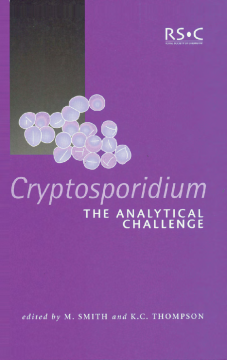
Additional Information
Book Details
Abstract
Cryptosporidium, in its various forms, is a widely recognised cause of outbreaks of waterborne disease. Regulatory bodies worldwide are increasingly requiring the development of "fit-for-purpose" detection methods for this protozoan parasite, but analysis is often problematic. Bringing together international academic and industry-based experts, this book provides a comprehensive review of the current state of analytical techniques for the detection of Cryptosporidium, as well as looking at likely future developments. In particular, the issues of species identification and oocyst viability are addressed. Quality assurance issues and potential problems associated with the new Cryptosporidium regulations are also highlighted. The extent of the perceived problems and the regulatory backdrop against which the analysis must be carried out are also discussed. Scientists in the water industry, environmental testing laboratories, researchers, consultants, environmental health professionals, food manufacturers and regulatory or environmental bodies are amongst the many who should read this book. In addition, anyone with an interest in microbiological challenges and problem-solving will welcome the coverage.
